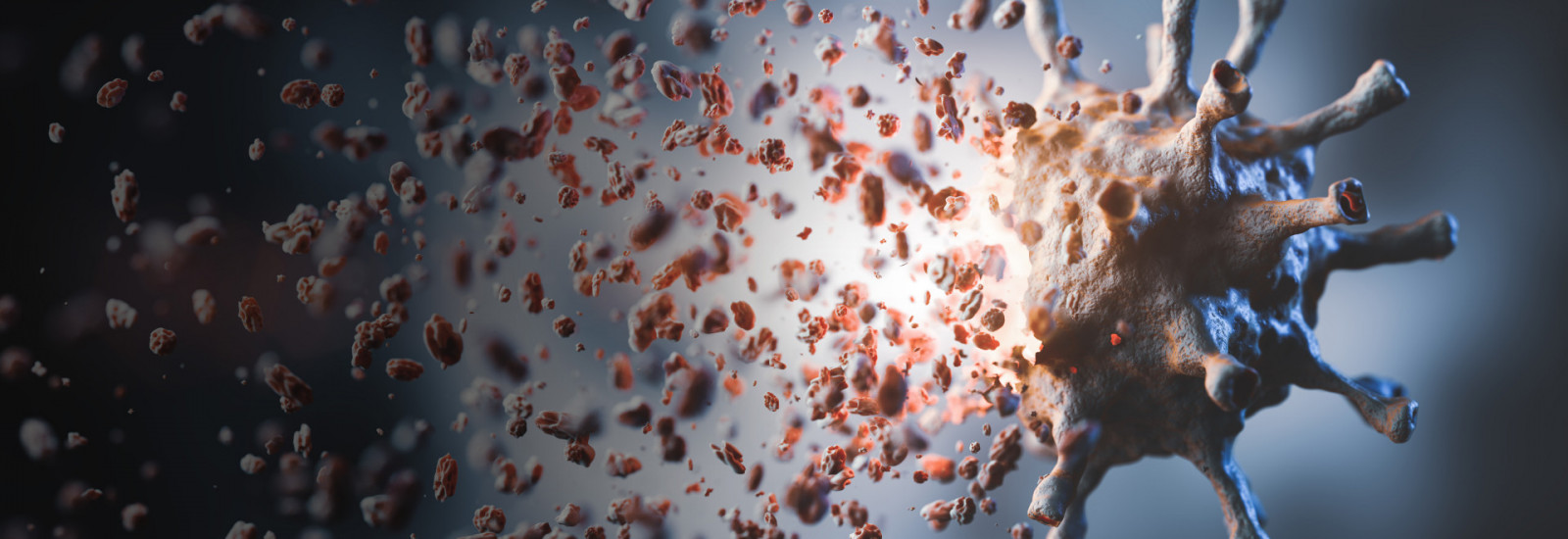A team of U.S. researchers has succeeded in uncovering potential vulnerabilities in the SARS-CoV-2 virus. Greg L. Hura, a scientist at Lawrence Berkeley National Laboratory (Berkeley Lab), Andrzej Joachimiak of Argonne National Laboratory and Hugh M. O'Neill of Oak Ridge National Laboratory and their collaborators are using the Advanced Light Source (ALS) in Berkeley, California (see infobox). In this ultrahigh-vacuum particle accelerator, two imaging techniques are available at beamline 12.3.1 - one of 46 experimental stations on the accelerator ring: small-angle X-ray scattering (SAXS) and protein crystallography.
Small-angle X-ray scattering (SAXS) can be used to quantify density differences at the nanoscale of a sample, for example, the size distribution of nanoparticles, size and shape of macromolecules, pore sizes, characteristic spacing of partially ordered materials, and more. This is achieved by analyzing the elastic scattering behavior of X-rays as they pass through the material. Depending on the angular range in which a distinct scattering signal can be recorded, SAXS is able to provide structural information on dimensions between 1 and 100 nanometers and on repeat distances in partially ordered systems of up to 150 nanometers.
Wide-angle X-ray scattering (WAXS) is similar to SAXS. Therefore, most diffractometers can perform both WAXS and limited SAXS in a single run by adding a beam stop. However, because the distance between the sample and the detector is shorter in WAXS, the data obtained offer higher resolution.
Taking advantage of this, the researchers studied the protein machinery responsible for RNA replication and translation in coronaviruses - and many other viruses. This machinery is called the RNA transcription complex (RTC).
Like clockwork and gears
The scientists liken virus replication to putting together a mechanical watch. "You can't put a spring in when the rest of the machinery is already in place. You have to squeeze and place the spring at a certain step in the assembly process, or the whole device won't work," Hurta said. Non-structural and accessory proteins, known as Nsps, played a major role in this process. They exist in a variety of rapidly changing forms depending on the task at hand, similar to a gear shift on a bicycle that allows the wheel to quickly adapt to changing terrain. "Similarly, the Nsps can't move into place in a random or chaotic order; they must follow a specific sequence of operations."
The team figured out how one of the Nsps recognizes the RNA molecules it acts on and how it cuts long strands of copied RNA into the correct length. Combining information from different structural techniques and computations is key to developing an alternative viral defense, O'Neill explains. Because of the similarity of RTC proteins among different viral strains, the team anticipates that drugs developed to block RTC activity could work not only for all COVID-19 variants, but also for other viral infections.
Infobox
The Advanced Light Source (ALS) is a research facility at Lawrence Berkeley National Laboratory in Berkeley, California. It is one of the world's brightest sources of ultraviolet and soft X-ray light. The latter has a much lower photon energy than hard X-rays, enabling imaging of solids as a homogeneous "unexposed" medium. In addition, the ALS is the first "third generation" synchrotron light source in its energy range.
The ALS provides multiple extremely bright sources of intense and coherent short-wavelength light that researchers from around the world use for scientific experiments. It is funded by the U.S. Department of Energy (DOE) and managed by the University of California (UC).
How ALS works
Electron bunches moving almost at the speed of light are forced into an almost circular path by magnets in the ultra-high vacuum of the ALS storage ring. Between these magnets, there are straight sections with dozens of magnets with alternating polarity, called "undulators." They force the electrons onto a slalom-like path. Under the influence of the deviations from the straight path, electromagnetic rays are emitted, ranging from infrared through the visible and ultraviolet range to X-ray wavelengths. The resulting beams can be guided to the instruments of the experimental stations via branching tubes – the beamlines.
The ALS has a complex vacuum system with a total length of more than one kilometer of vacuum tubes for the electron and photon beams. The vacuum pressure in the beam tubes is 100 mbar at some experimental stations and goes up to 1x10-11 mbar in the storage ring.
The extreme vacuum is necessary for a very simple reason: If the tubes were ventilated normally, the elementary particles would collide with the air molecules immediately after leaving the electron or photon source and interact with them. Accelerated radiation would not even occur.
In order to be able to seal off certain sections of the high and ultrahigh vacuum area for maintenance work, VAT sector valves are used. They can be used to hermetically seal the sections and thus maintain the high and ultra high vacuum in the other areas. In addition, VAT quick-acting valves are used to quickly isolate affected ring or tube sections in the event of leakage, maintaining the vacuum and preventing possible contamination by incoming air.
The vacuum valves used are VAT all-metal valves. These are characterized by the fact that they function completely without elastomer seals. Sealing here is achieved with metal on metal - the surfaces of the seals are correspondingly precise. Elastomer seals, which are also frequently used for valves in a vacuum, decompose very quickly under the high temperatures and high-energy radiation prevailing in the beamlines and storage ring.
